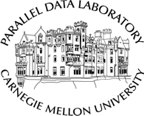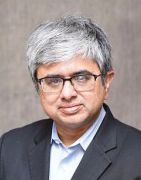
PDL Talk Series
July 20, 2023
TIME: 12:00 noon - to approximately 1:00 pm EDT
PLACE: Virtual - a zoom link will be emailed closer to the seminar
 SPEAKER: Tirthankar Lahiri
SPEAKER: Tirthankar Lahiri
Sr. Vice President, Data and In-Memory Technologies, Oracle
BIO: Tirthankar Lahiri has worked in the database industry for 20+ years. He is currently the Senior Vice President of Data and In-Memory Technologies at Oracle and manages the Relational Database Management Systems (RDBMS) Engine Group, TimesTen In-Memory Database, and Oracle NoSQL DB teams. Lahiri first got his Bachelors of Tech in Computer Science from the Indian Institute of Technology, Kharagpur. He then went on to get his MS from Stanford University. He was also in the Ph.D. program at Stanford, in which his research areas were Multiprocessor Operating Systems and Semi-Structured Data. Since June 2006, Lahiri has been involved in the development of Oracle’s TimesTen in-memory Database. Since September 2012, Lahiri has been the Vice President of TimesTen and manages the engineering team for the database. Finally, since 2013, Tirthankar Lahiri has been managing the Oracle RDBMS Data Space Transaction (DST) team, along with TimesTen.
 SPEAKER: Beda Hammerschmidt
SPEAKER: Beda Hammerschmidt
Senior Director, JSON Technologies, Oracle
BIO: I joined Oracle in 2006. For the most part I was a developer on XML and JSON. Today I manage semi-structured data support in Oracle Database (XML, JSON, Lobs, Full text, object types).
Document Relational Duality: The Revolutionary Convergence of Documents, Objects, and Relational Data
The "Object-Relational Impedance Mismatch" has been a long-standing, even historic, mismatch between applications and relational databases: Applications tend to think of data in terms of hierarchical objects or documents, while relational databases represent data in terms of rows and columns in normalized tables. Past attempts to address this mismatch have included storing data natively in the form of objects, or in the form of documents, or using complex and inefficient Object Relational Mapping (ORM) tools to translate application data accesses to relational database accesses. However, each of these approaches involves significant tradeoff and overheads, and none of them truly solve the fundamental mismatch problem. The Relational Model was designed for high-performance and space-efficiency, while the Document Model was designed for flexibility and ease-of-use, and both models have their place. The solution to the mismatch is not to force-fit one model into the other, nor to abandon one of the models in favor of the other! In this session, we will describe "Document Relational Duality" - a landmark capability in Oracle Database 23c that finally solves this pesky mismatch, by combining the benefits of JSON Documents and Relational Data, without incurring the drawbacks of either model. Mismatch solved, and if at the end of this talk, you say "This solution was totally obvious!", we will consider the talk a success!
CONTACTS
Director, Parallel Data Lab
VOICE: (412) 268-1297
Executive Director, Parallel Data Lab
VOICE: (412) 268-5485
PDL Administrative Manager
VOICE: (412) 268-6716